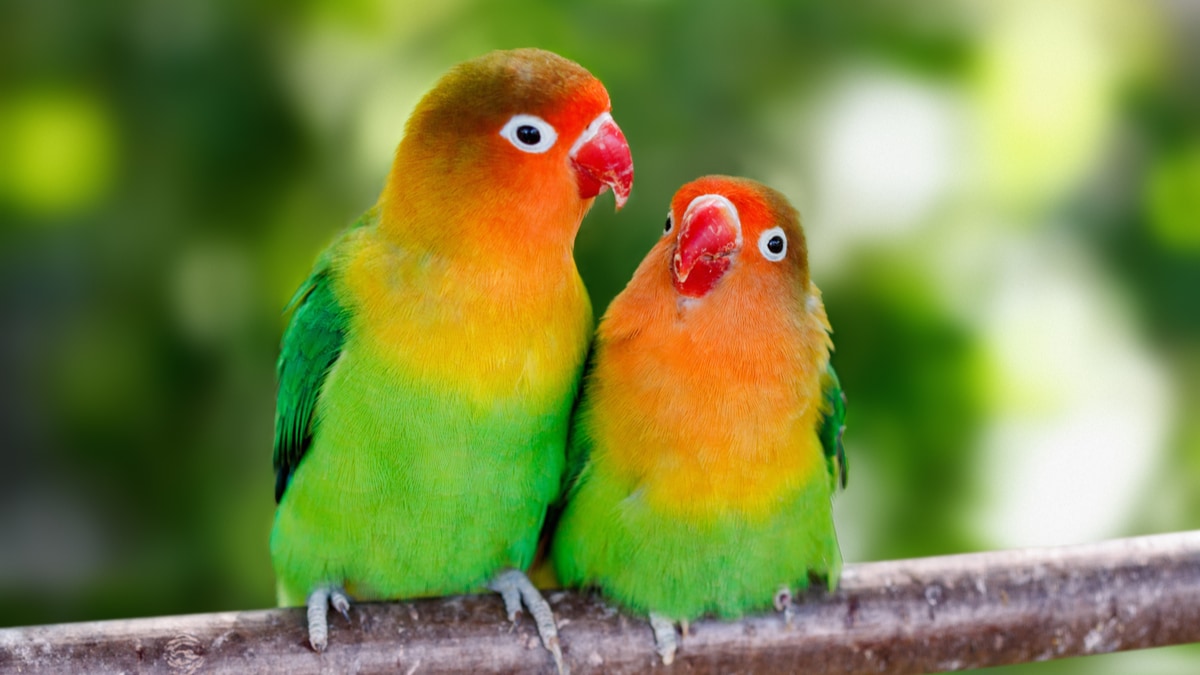Lovebirds are one of the most popular pet parrot species, which comes as no surprise to those who are acquainted with them. Beautiful and clever, these little African parrots have been one of the most popular for more than a century. There are, however, many misconceptions regarding lovebirds, their behaviour, and what it’s like to have them as pets. If you’re curious about what lovebirds are like, continue reading to learn some fun facts about these tenacious little birds.

1. Lovebirds Barely Talk
Lovebirds Barely Talk This is due to the fact that they seldom choose to talk, and when they do, they often imitate basic noises like whistles or home sounds like doorbells and microwaves. It’s unclear why certain lovebirds are more prone to imitating speech than others, but it’s generally assumed that those who do learn to speak are trained from an early age.

2. There are Several Types of Lovebirds
These little parrots are divided into nine subspecies, each with its own set of features and characteristics. Masked lovebirds, Black-cheeked lovebirds, Fischer’s lovebirds, Nyasa lovebirds, Swindern’s lovebirds, red-faced lovebirds, Abyssinian lovebirds, Madagascar lovebirds, and the famous peach-faced lovebirds are among them. The most popular lovebird is the peach-faced lovebird, which has a rainbow of yellow, green, and blue on its body as well as beautiful peachy-pink faces. While the various kinds of lovebirds vary in appearance and behaviour, they all survive in captivity for up to 20 years on average.

3. Lovebirds Are One of the Tiniest Parrot Species
Lovebirds Are One of the Tiniest Parrot Species When measured from the beak to the end of the tailfeathers, most lovebirds are between 5 and 7 inches long at maturity. Their tiny size has contributed to their appeal among people who live in flats and other cramped quarters. Many of these bird enthusiasts have discovered that keeping a smaller parrot like a macaw or cockatoo is simpler than keeping a bigger parrot like a macaw or cockatoo.
4. Lovebirds Aren’t Always Best Kept in Pairs
Lovebirds Aren’t Always Best Maintained in Pairs While it is true that they are very sociable birds that thrive on contact and must be socially stimulated, single lovebirds should be kept in the majority of instances. This is due to the fact that these birds reproduce quickly in captivity, and most bird owners are unable to care for a large family of parrots. It’s also worth mentioning that birds maintained in pairs are more likely to connect with one another and avoid human contact. Those who want their bird to be friendly and open to being handled by humans have discovered that keeping birds alone and spending as much time as possible playing and interacting with them is the best way to meet their requirements.

5. Lovebirds Are Extremely Active
Like other parrots, lovebirds are very active birds that need a lot of activity to remain in good shape. Adopters of lovebirds must be willing and able to provide their feathery companion with a bird-safe area to play outside of its cage for many hours each day. This will enable the bird to exercise all of its muscle groups, as well as offer vital cerebral stimulation for these very clever creatures.


















